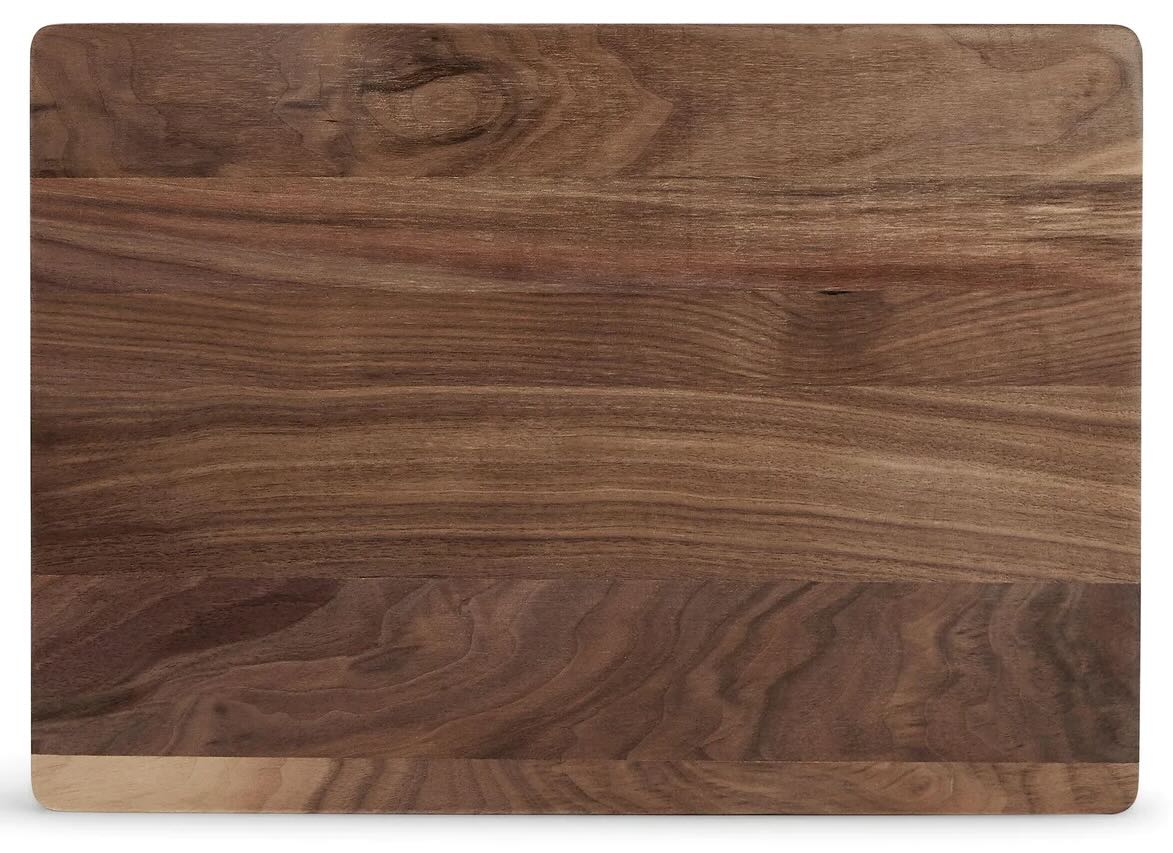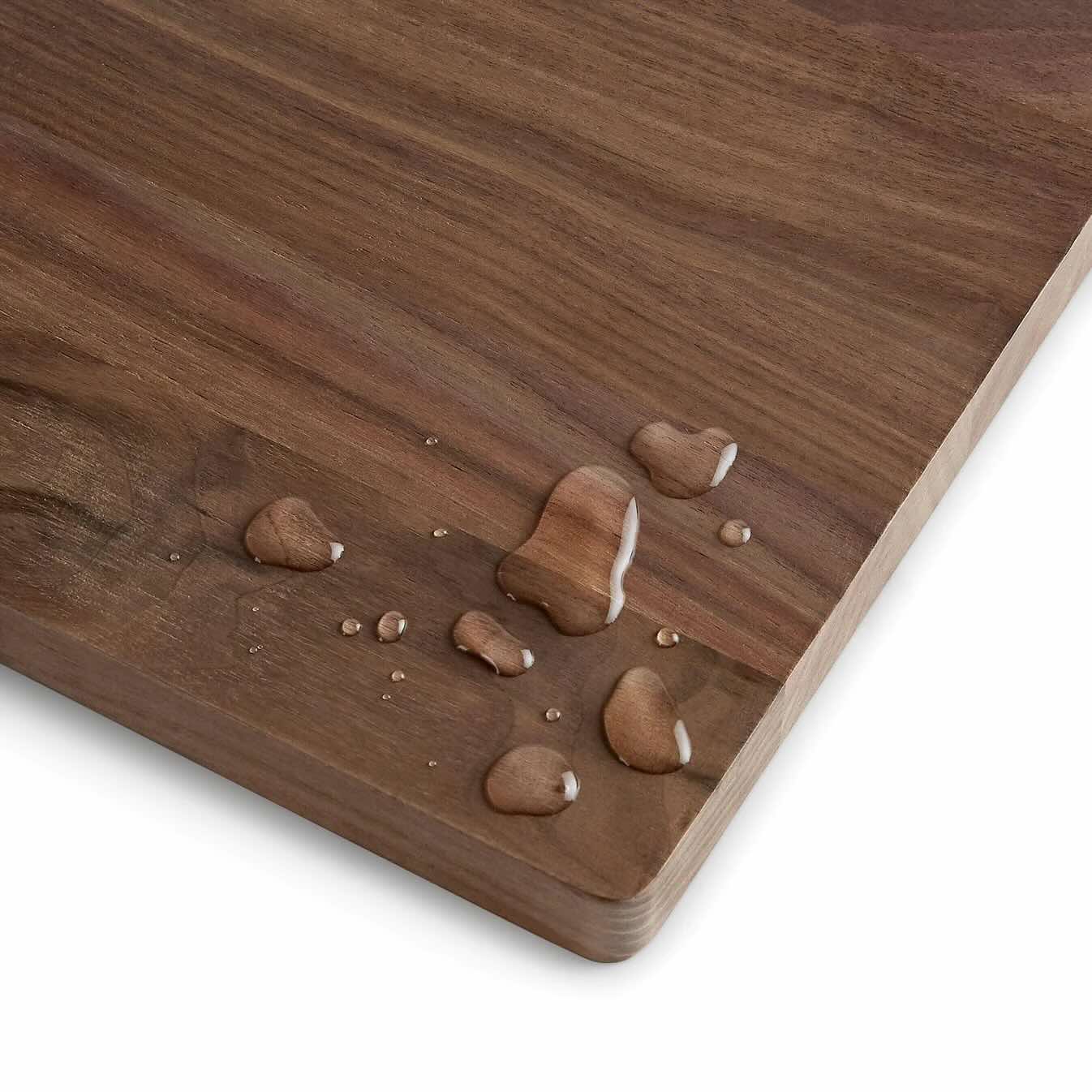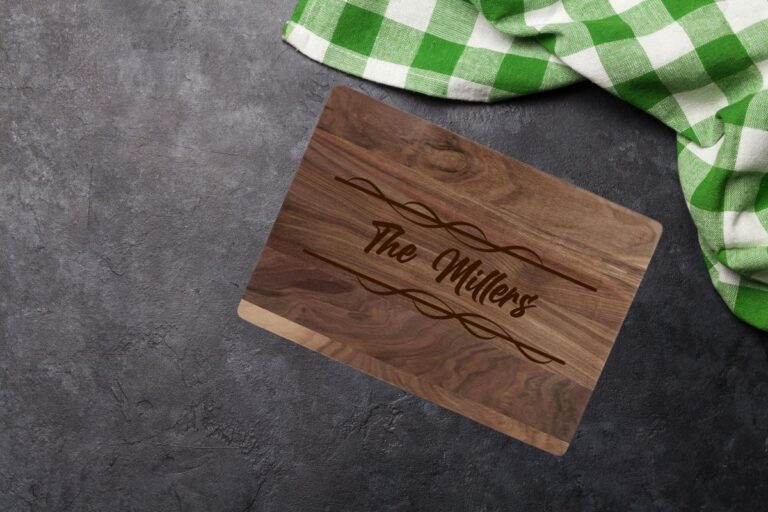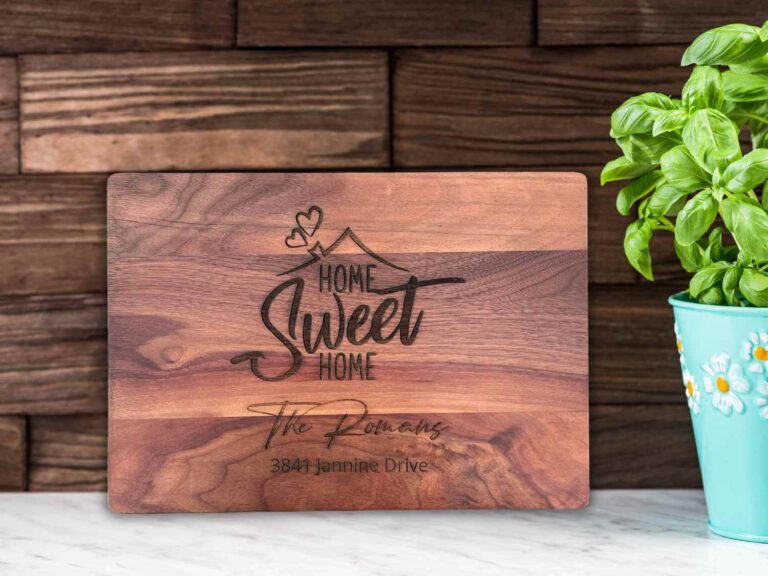When selecting the ideal material for your kitchen cutting board, walnut wood stands out as a premier choice due to its inherent qualities. Understanding why to choose walnut can greatly influence your culinary experience and the longevity of your kitchen tools.
Walnut is renowned for its durability, which makes it capable of withstanding daily use while resisting knife marks and potential warping or cracking. This resilience ensures that your cutting board remains a hygienic surface for food preparation over time.

The deep, rich tones of walnut wood add an element of elegance to any kitchen setting. Beyond its functional benefits, walnut’s aesthetic appeal is unmatched; it ages gracefully and can serve as a statement piece when hosting guests or simply enjoying your kitchen space.
Furthermore, the maintenance of a walnut cutting board is relatively straightforward, requiring only occasional oiling to preserve its natural beauty and function.
Key Takeaways
- Walnut cutting boards are chosen for their durability and resistance to damage.
- The aesthetic qualities of walnut wood complement the kitchen environment.
- These boards require straightforward maintenance to retain their condition.
Benefits of Walnut Wood
When considering a cutting board, you want a material that offers strength and a touch of elegance. Walnut wood stands out for its durability and hygienic properties, as well as the gentle touch it offers to your knives.

Durability and Longevity
Walnut is renowned for its hardness and resistance to wear, making it a stellar choice for cutting boards that last. Its dense grain withstands frequent use, meaning your walnut cutting board can handle daily slicing and dicing without significant damage.
Resistance to Bacteria
Your walnut cutting board is not just strong, but also hygienic. The tight grain of walnut creates a less porous surface, making it more resistant to bacteria and moisture. This characteristic helps ensure a cleaner food preparation surface with proper care.
Knife-Friendly Surface
A walnut cutting board is kind to your knives. The wood’s hardness is balanced with a forgiving surface, preserving the sharpness of your blades. This not only keeps your knives in good condition but also makes your prep work more efficient.
Aesthetic Appeal
When you choose a walnut cutting board, you’re investing in more than just a surface for slicing and dicing; you’re selecting a piece of art that enhances the visual richness of your kitchen.
Rich Color and Grain Pattern
Walnut wood is renowned for its deep, chocolate hues that can range from light brown to a near-black coloration. This natural spectrum of color grants each walnut cutting board a unique appeal, with variations that ensure no two boards are exactly alike.
The grain pattern of walnut is typically straight, but can also display waves or curls that contribute to its visual complexity.
Complements Kitchen Decor
Whether your kitchen features contemporary design or rustic charm, a walnut cutting board can seamlessly integrate with your existing decor. The opulence of walnut’s colors pairs well with a variety of kitchen materials, from stainless steel appliances to marble countertops. The timeless look of a walnut cutting board ensures it’s not just a tool, but a statement piece that can be proudly displayed.
Maintenance and Care
Maintaining a walnut cutting board ensures its durability and safe use in your kitchen. Proper care keeps the board hygienic and preserves its natural beauty.
Seasoning and Conditioning
To protect your walnut cutting board from dryness and cracking, you must season it regularly. This involves applying a food-grade mineral oil or a specialized conditioner designed for wood. Spread the oil or conditioner evenly using a soft cloth, let it soak in for a few hours, then wipe off any excess.
Cleaning Practices
After use, clean your walnut cutting board with warm, soapy water and a soft sponge to prevent the growth of bacteria. Avoid submerging it in water or placing it in the dishwasher, as this can cause the wood to warp. To disinfect the board, you can use a mild solution of vinegar and water. Dry it thoroughly upright to allow for even air circulation.
Sanding and Refinishing
Your cutting board will acquire scratches and knife marks over time. These can be removed by sanding it with a fine-grit sandpaper, then reapplying oil or conditioner. To preserve the quality of your cutting board, sand evenly along the grain and apply a fresh coat of oil or conditioner after the surface is smooth.
Frequently Asked Questions
When considering the materials for your kitchen, opting for a walnut cutting board can offer distinct advantages such as durability and safety. Explore the specific benefits that make walnut an exceptional choice.
What benefits do walnut cutting boards offer compared to other woods?
Walnut cutting boards are noted for their durability and aesthetic appeal. Their fine grain minimizes the absorption of moisture and bacteria, making them a sanitary choice for your kitchen.
How does the durability of walnut cutting boards compare to other wood types?
Durability is one of walnut’s standout features; it’s resilient against daily use and has a balance of hardness that’s tough on wear but gentle on knives.
What makes walnut a safe choice for food preparation surfaces?
The dense grain of walnut gives it antimicrobial properties, providing a surface less prone to bacteria growth, thus making it a safer option for food preparation.
Why might one choose a walnut cutting board over maple or cherry options?
Compared to maple or cherry, walnut provides a softer surface that’s kinder to knives, maintaining their sharpness longer while still offering comparable durability and antibacterial qualities.
Are there specific woods that are unsuitable for cutting boards, and why?
Certain woods are overly porous or soft, making them prone to bacteria retention and quick wear, thereby making them unsuitable for cutting boards unlike the close-grained nature of walnut.
How can one extend the lifespan of a walnut cutting board with proper care?
Regular maintenance including cleaning, drying, and seasoning your walnut cutting board will extend its lifespan, ensuring it remains a durable and hygienic surface in your kitchen for years.


